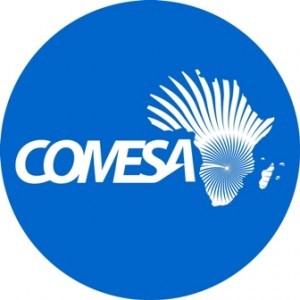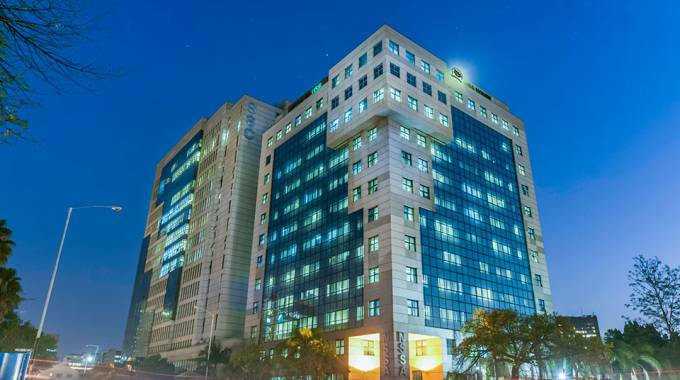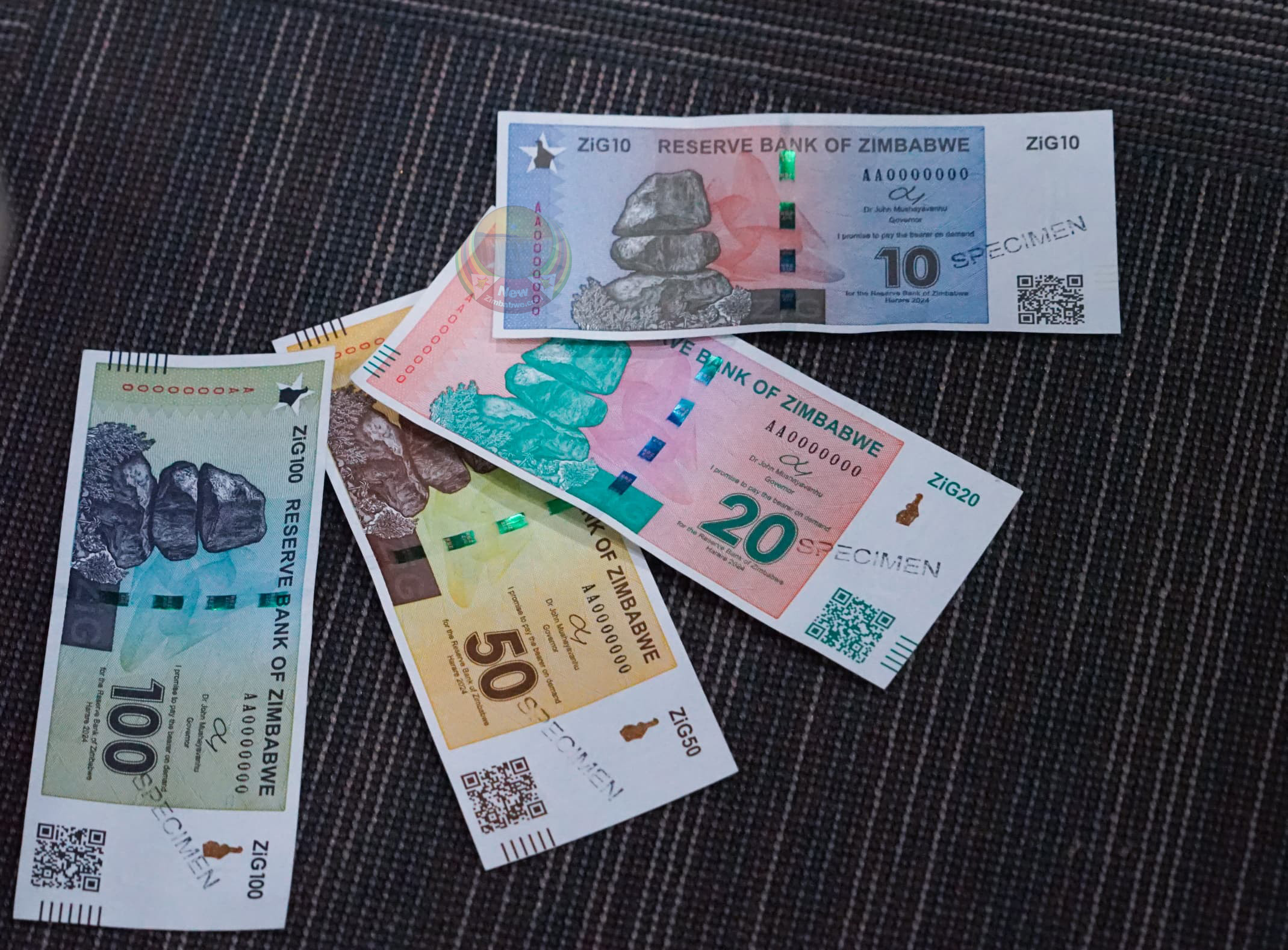New power stations needed soon
For probably the first time since the first unit was commissioned in 1959, and the full station by 1962, Kariba South is no longer being used for base load power supplies in Zimbabwe and being instead used, as it should, for the peak demand.
The latest figures from the Zimbabwe Power Company show an output of 641 megawatts on a single day.
That is way above the average ration granted by the Zambezi River Authority with the very low dam levels and inflows over the last two years, in fact almost three times the average.
But Zimbabwe Power Company can run the station at far higher than average for a limited number of hours, before cutting back to a trickle as demand goes down.
The commissioning of the 600MW extension to Hwange Thermal Power Station, plus the more than 300MW that the older units can still reliably supply while the rehabilitation is in progress, now provide the base load, the 24/7 supply, while the hydro-station can come in at quite high levels as demand starts picking up in the early morning.
Hydro-stations are almost instant in reacting to changes in demand, basically just turning on a tap, and there are no operational problems in switching turbines and generators on and off frequently or speeding up or slowing down the turbines.
A coal thermal station is far less useful for this purpose, a boiler needing up to an hour after the fires are lit to be producing high pressure steam and spinning the steam turbines, and constant switching a unit on and off is not recommended practice, to put it mildly, because of the sort of procedures, including a diesel feed on the coal, needed to restart a boiler.
After the first two phases of Hwange were commissioned in the middle and late 1980s, Zesa did, regrettably, tend to use Hwange far more than it should as the peak station, possible so long as the station operating engineers had a reasonable schedule of when to light up extra units, while Kariba South was largely allowed to run flat out as much as possible.
The main reason for this was underpriced electricity, requiring the greatest possible use of Kariba, with its free fuel, rather than Hwange with pricey coal.
The operational costs of generating at Kariba are very low indeed, less than a tenth of what ZETDC sells the energy for. Maintenance costs are lower than a thermal, since wear is a lot less and the processes are less complex, and once the dam wall is paid for the capital costs come right down.
Admittedly in recent years there has been the extra capital cost of the essential work on the floodgates, needed in the extremely unlikely event that anyone will ever have to spill water again, and the plunge pool downstream of the damwall, again not something that is going to be much in use.
But while that work was delayed, Zimbabwe and Zambia were brought to the point where they had to borrow the sums involved and then commit to servicing the debt.
The capital costs, and again finance servicing, on the 300MW extension to Kariba South is also required although in practical terms Zimbabwe has never really needed that extension.
It was built to allow the station, when operating near maximum average output of the original 750MW to cope with surges and peaks, but the cut back in average generation rations in recent years skewed the sums.
The new units are probably in use at times, because some older units are in need of maintenance but in theory over the past three or so years have never, in theory, needed to be used.
But running Hwange with far more switching on and off of units than an operational engineer, as opposed to a financial manager, though was ideal did increase stresses and shorten the life of far too many critical components, basically at the boiler end of each unit.
That pushed up the maintenance costs, or at least the needed maintenance costs. Zesa, with its cramped tariff set to satisfy consumers rather than producers, was already underfunded for a lot of maintenance and the double blow meant that Hwange Thermal was allowed to run down.
That Hwange decline created the appalling load shedding we endured when poor rains over southeast Angola slashed the Zambezi flows, so the inflows into Lake Kariba, and so the amount of water available to generate power at the two Kariba stations.
The gross undersupply was a combination of the reduced output at both major stations, one because of lack of maintenance and periodic refurbishment and the other because of drought.
The advent of Hwange Extension, and the better management of power stations at least from the engineering standpoint, even if the financial manager gasps a bit, has largely meant Zimbabwe can sort of cope, but with the economy still expanding and expansion likely to accelerate, that “just coping” is not really good enough.
Solar is seen as the obvious short and middle-term solution. It is already around 60MW feeding into the grid, as well as all that private capacity off grid, when the sun is shining brightly, and is expected to double over the next couple of months.
Work has started on some on of the larger capacity solar stations, although these are being built in phases so getting to 200MW is going to take a bit of time.
But fairly obviously the investors can be pushed and there is still a guaranteed market for what they can generate. Solar allows Kariba South to become even more narrowly focused on being a peak period station, as the higher consumption during the working day is largely solar driven to top up Hwange.
But there is little sunshine in the early morning and the evenings, when the industrial, commercial, mining and residential demand all hit together to cause the largest peaks.
In some ways it is a great pity that we never made it legally compulsory for all new housing to have solar water heating from the 1980s, as the Solar Energy Society of Zimbabwe was then lobbying for.
The more responsible developers are including solar heating as routine in the cluster housing they have been developing in recent years, with electricity being the supplementary heating, but there is still a lot of development without solar water heating.
In fact we see more solar panels on roofs than solar heaters, and while these can do a lot to make life very pleasant so far as lighting, television, electronic appliances, fridges water pumps and the like are concerned, they are less useful for heating water or cooking unless huge and expensive arrays with gigantic battery packs are installed. Even a rich person is better off with solar panels, solar water heaters and a gas stove.
The persistent droughts we have been seeing in Angola, even when in years when Zimbabwe and central Zambia had reasonable rainfall, tend to indicate major climate changes.
While the Kariba stations are not just useful, but are essential for peak demands, the cost benefit of Batoka Gorge seem ever more limited.
That station was always somewhat oversold as a pair of 1 200MW stations. The future lake Batoka is a long and fairly narrow lake with a resulting modest storage capacity, at least above the dead level, the water needed for power generation.
This meant that it was closer to a run-of-river scheme and the consultant’s reports suggested generation at each station ranging from 1 200MW as the Angolan floods arrived falling to around 400MW in the last three months of each year as the lowest flows were recorded.
With the present flow regime even those figures need to be halved. There was discussion with potential investors, who would take the risks but probably need a guaranteed market, with General Electric showing the most interest. The Zambezi River Authority has suggested a new formal tender procedure to see what investors might be prepared to risk.
But with the lowish modern flows any investor is going to need high prices for power, and in any case the huge monthly fluctuation in output is tricky, Admittedly if Batoka was built the main annual shutdowns and maintenance at the rest of the stations in Zimbabwe and Zambia would be scheduled for the Zambezi floods.
And Kariba could be put on reduced output to let the lake rise as much as possible and then switch to the more than 1000MW on each side using the far greater storage capacity for the low-Batoka months.
But generally Batoka is looking a more dubious investment every year, despite the optimism at the Zambezi River Authority.
Whatever solution is chosen, and a third major station is needed in Zimbabwe, which might be yet another extension at Hwange since the coal reserves are remarkably good, Zimbabweans are going to have to be ready to pay some more as the percentage of cheap power declines.
A close watch needs to be kept, so that we do not pay for generation inefficiency, but we do have to pay the sort of prices efficient generating companies require for viability and good maintenance.-ebusinessweekly










